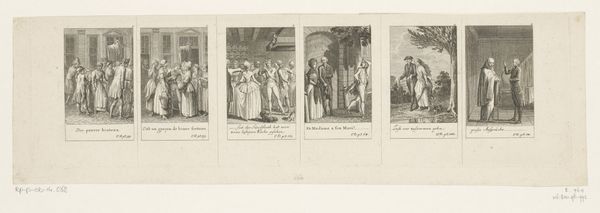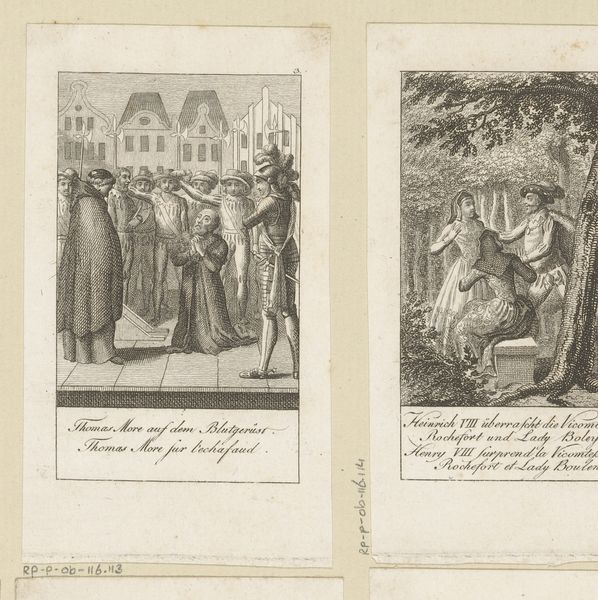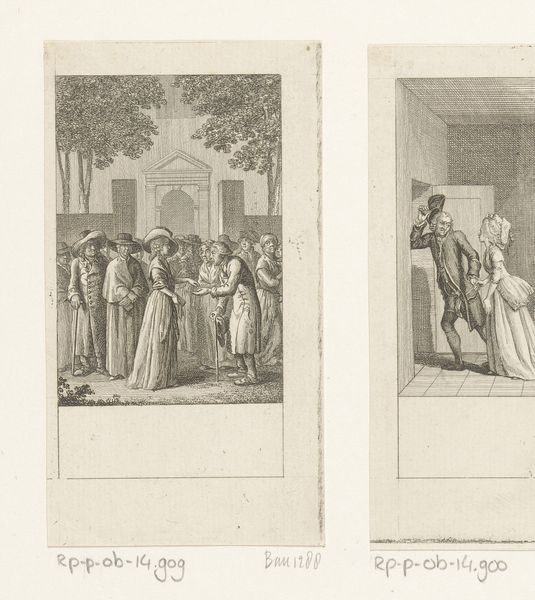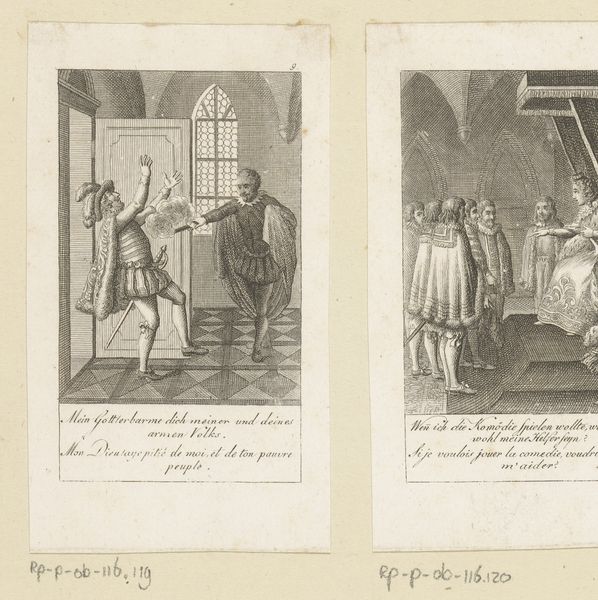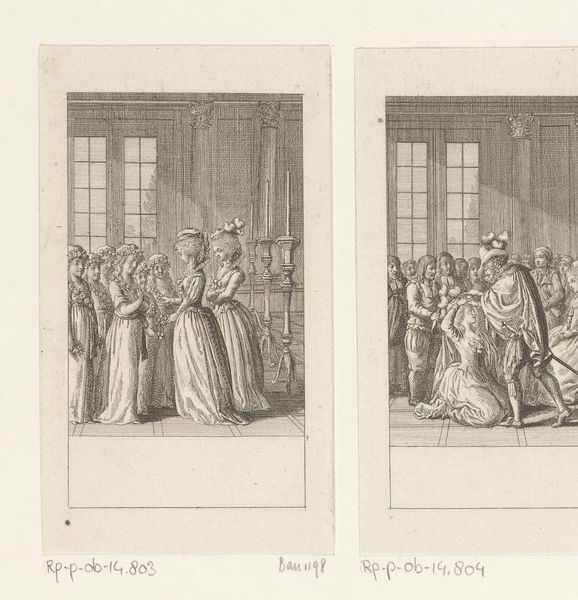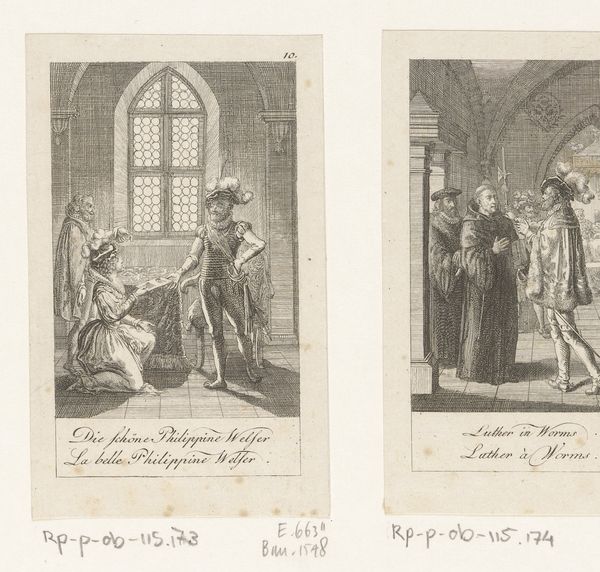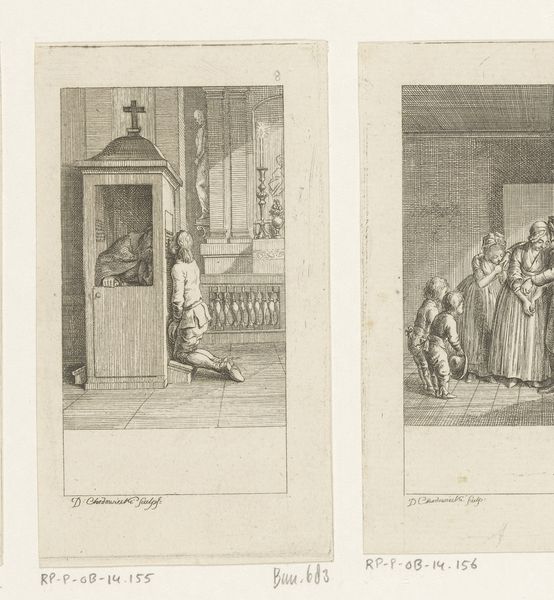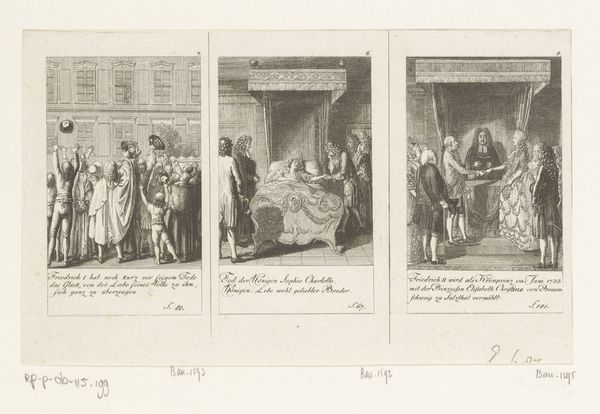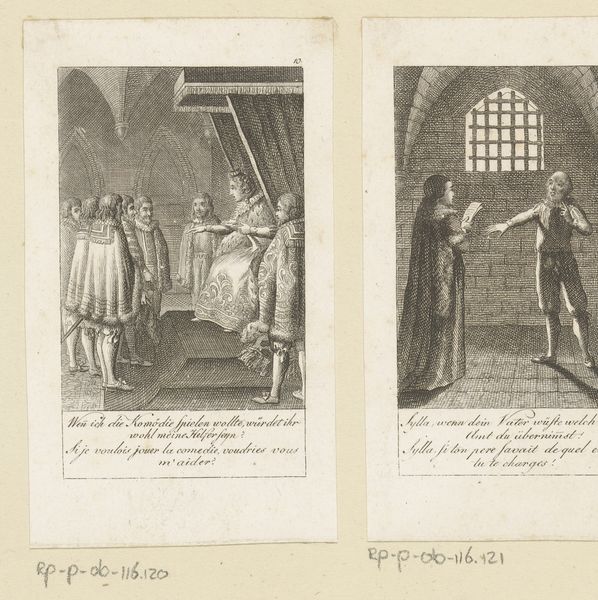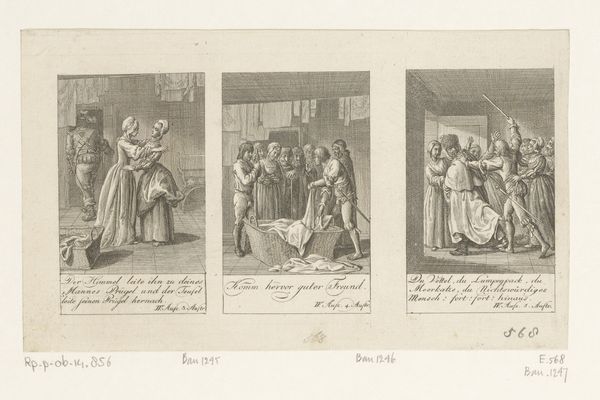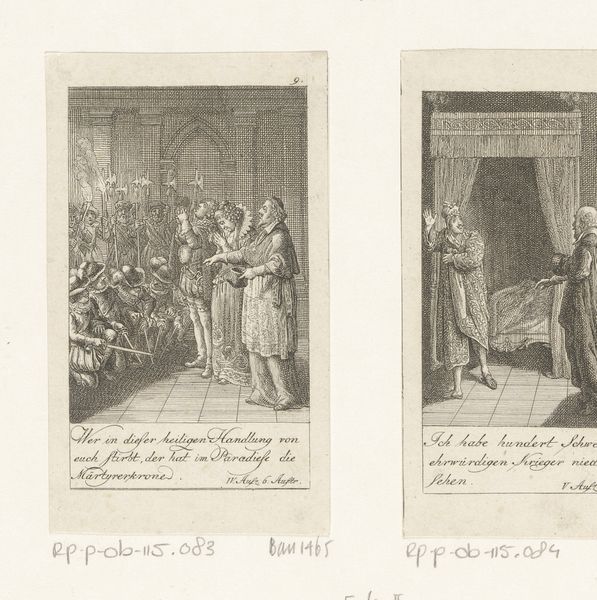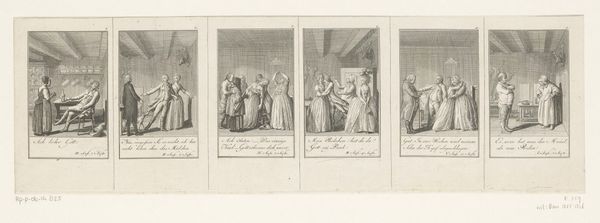
Dimensions: height 109 mm, width 62 mm
Copyright: Rijks Museum: Open Domain
Curator: This is a fascinating print from 1796 titled "Voorstelling uit de geschiedenis van Hendrik VIII," meaning "Scenes from the History of Henry VIII," crafted by Christian Gottlieb Geyser, held here at the Rijksmuseum. Editor: My initial reaction is somber. The monochromatic tones evoke a sense of severity, and the composition feels quite stark despite all the detail. What can you tell me about how it might communicate meanings? Curator: This piece is an engraving divided into two distinct scenes. On the left, we witness the coronation of Anne Boleyn, steeped in symbolism. The elaborate robes of the clergy and Anne herself signify power and divine approval, reflecting a society obsessed with status. The other panel shows Thomas More kneeling before his execution, his posture and position creating the emotional tenor, echoing religious imagery of sacrifice and martyrdom. Editor: The materiality is interesting. The choice of engraving, a printmaking technique involving meticulously carving lines into a metal plate, suggests a desire for mass production, a wider dissemination of these images and ideas. This isn't about a unique, precious object, but rather a standardized visual narrative. Were such works usually hand-colored back then? Curator: While some were, most historical engravings such as this relied on the line work itself to communicate detail and drama. What’s potent here is the visual storytelling. The artist, though German, is participating in a much older project: portraying English history as high drama where marriage, royalty and political betrayal played out on an immense and memorable scale. Even the staging—in an identifiable church for the coronation, against simple architecture for More’s execution—contributes to historical memory. Editor: Exactly! And looking closely, I wonder what kind of labor was involved in Geyser's creative practice here. It looks almost mechanical in its detail. The uniform marks of the engraving must have required painstaking effort, pointing to an almost factory-like artistic environment, reflecting broader socio-economic shifts, even when treating older historical subjects. Curator: It serves to make an intense and layered message. Through careful composition, religious and political symbolism, and this specific mode of mechanical reproduction, we glimpse a crucial intersection between power, belief, and cultural memory. Editor: It's amazing to consider the combined effort and social conditions that enabled such prints. Seeing it today adds another layer, connecting our contemporary consumption of images with this early modern method.
Comments
No comments
Be the first to comment and join the conversation on the ultimate creative platform.
